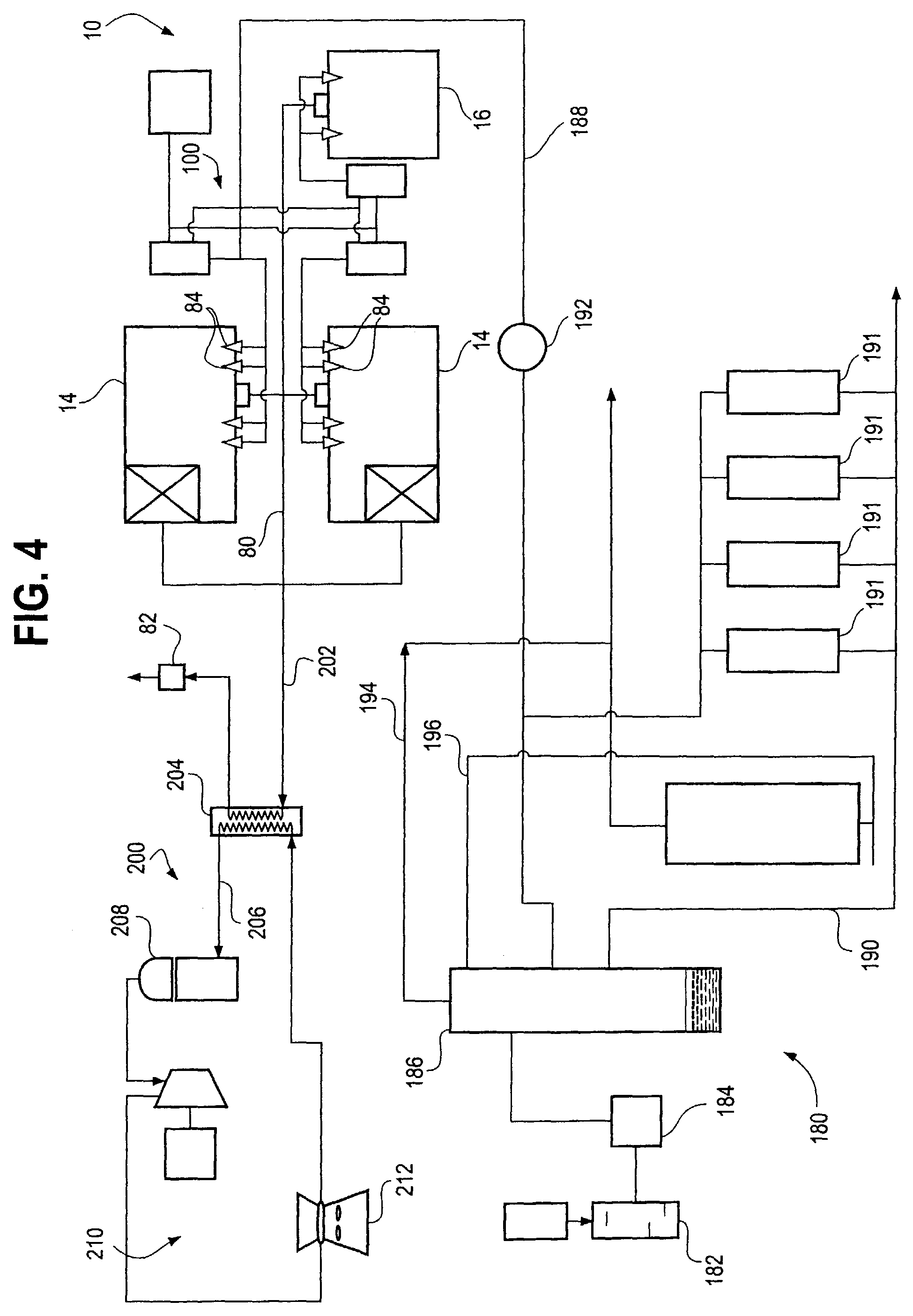Method for oxy-fuel combustion
a combustion system and oxy-fuel technology, applied in the direction of combustion using lumps and gaseous fuels, indirect carbon-dioxide mitigation, combustion using lumps and liquid fuels, etc., can solve the problems of system production of nox and other green-house gases, structural and material limitations dictate the upper temperatures to which many industrial systems can be subjected, and the use of lumps and gaseous fuels is quite limited, so as to reduce the consumption of fuel and reduce the use of gas
- Summary
- Abstract
- Description
- Claims
- Application Information
AI Technical Summary
Benefits of technology
Problems solved by technology
Method used
Image
Examples
Embodiment Construction
[0046]While the present invention is susceptible of embodiment in various forms, there is shown in the drawings and will hereinafter be described a presently preferred embodiment with the understanding that the present disclosure is to be considered an exemplification of the invention and is not intended to limit the invention to the specific embodiment illustrated. It should be further understood that the title of this section of this specification, namely, “Detailed Description Of The Invention”, relates to a requirement of the United States Patent Office, and does not imply, nor should be inferred to limit the subject matter disclosed herein.
[0047]An oxy-fuel combustion system uses essentially pure oxygen, in combination with a fuel source to produce heat, by flame production (i.e., combustion), in an efficient, environmentally non-adverse manner. Oxygen, which is supplied by an oxidizing agent, in concentrations of about 85 percent to about 99+ percent can be used, however, it i...
PUM
| Property | Measurement | Unit |
|---|---|---|
| Fraction | aaaaa | aaaaa |
| Fraction | aaaaa | aaaaa |
| Fraction | aaaaa | aaaaa |
Abstract
Description
Claims
Application Information
 Login to View More
Login to View More - R&D
- Intellectual Property
- Life Sciences
- Materials
- Tech Scout
- Unparalleled Data Quality
- Higher Quality Content
- 60% Fewer Hallucinations
Browse by: Latest US Patents, China's latest patents, Technical Efficacy Thesaurus, Application Domain, Technology Topic, Popular Technical Reports.
© 2025 PatSnap. All rights reserved.Legal|Privacy policy|Modern Slavery Act Transparency Statement|Sitemap|About US| Contact US: help@patsnap.com



